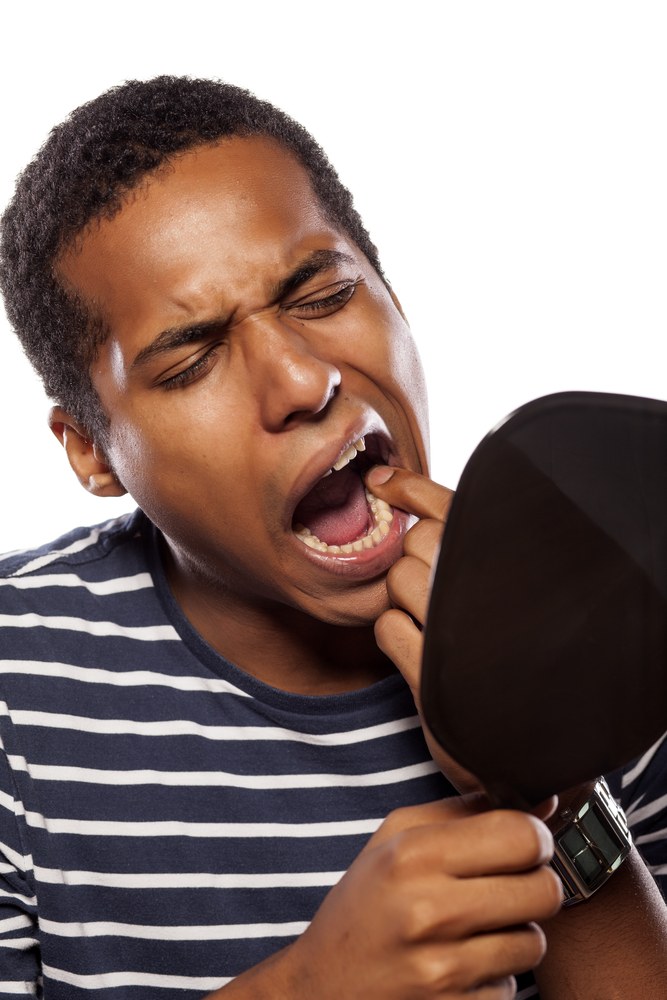Just as a single loose brick can threaten the integrity of an entire wall, a loose tooth can undermine your smile.
Hi, Kazeem here again! Today, I thought it best to start with an analogy as you can see from the start of this blogpost.
Have you ever found yourself in this unsettling situation, feeling unsure about the next steps? Good oral hygiene sets the foundation for your oral and dental health, keeping your teeth firmly in place. But in situations where brushing, flossing, and rinsing with salt water are just not enough, you must not succumb to the temptation of probing the tooth with your tongue or fingers. Instead, there are specific, effective measures you can take to stabilize that tooth and protect your smile.
Showing some curiosity and wanting to know more about these measures is only natural, especially when your dental health and the integrity of your smile are at stake. Let us look at these steps together, and get you equipped with all the knowledge (or dare I say secrets) to handle this common yet distressing issue to ensure an excellent outcome.
Are you petrified of losing a tooth? Are you desperate yet struggling with finding reliable ways to fix a loose tooth at home?
Don’t let a loose tooth cause you desperation or pain any longer.
Key Takeaways
- Maintain good oral hygiene by brushing twice daily and using antibacterial mouthwash to fight bacteria.
- Rinse with salt water regularly to soothe inflammation and tighten the loose tooth through its natural antiseptic properties.
- Avoid hard foods to prevent further damage and allow the tooth a chance to heal.
- Protect teeth from further injury by wearing a mouth guard, especially if you grind your teeth.
- Seek professional dental care for proper assessment and treatment options, such as splinting or dental implants.
Practice Good Oral Hygiene
Maintaining good oral hygiene is essential in stabilizing a loose tooth, starting with brushing your teeth twice a day using fluoride toothpaste. This isn’t just about keeping those pearly whites shining; it’s about waging war on the bacteria that threaten to loosen your grin. Flossing isn’t merely a suggestion; it’s a critical maneuver in the tight spaces between your teeth, where trouble likes to hide. And let’s not forget the secret weapon: antibacterial mouthwash, a mighty ally in banishing harmful bacteria from the battlefield of your mouth.
You’re not just brushing and flossing; you’re on a mission to prevent further damage that could escalate dental issues into full-blown emergencies. Think of it as your gum disease treatment at home—no cape required. Proper oral hygiene is your first line of defense in the loose tooth treatment playbook.
Salt Water Rinse
After ensuring your oral hygiene is up to par, incorporating a salt water rinse into your routine can further aid in stabilizing a loose tooth. This seemingly simple solution is a powerhouse when it comes to oral health. Mixing just a teaspoon of salt with warm water creates a magical mouthwash that not only targets gum damage repair but also tightens those pesky loose teeth caused by various factors.
Gargling with this saline solution can do wonders for your dental care, offering a natural antiseptic property that goes to war against bacteria lurking in your mouth. It’s like sending in a gentle yet effective soldier to soothe inflammation and kick start the healing process. And let’s be honest, who wouldn’t want a natural, cost-effective method in their arsenal for combating oral health issues?
But here’s the kicker: consistency is key. For best results, this salt water rinse should become as much a part of your daily routine as brushing and flossing. Just remember, swish, spit, and repeat – but not too much. Overdoing it might just leave you with a different kind of salty taste in your mouth.
Avoid Hard Foods
To protect your loose tooth, you’ll need to steer clear of hard foods that can cause further damage. Imagine chomping down on a crunchy apple only to find your tooth mobility has worsened. Not the ideal scenario for anyone aiming for gum repair without surgery. By opting for soft foods, you’re not just playing it safe but also taking preventive measures to avoid turning damaged teeth into a dental emergency.
Think of it as giving your tooth a much-needed break, allowing it to rest and potentially heal without the added strain. This doesn’t mean you have to sacrifice flavor or nutrition; there are plenty of soft food options that are both delicious and nourishing. From smoothies and soups to mashed vegetables and soft-cooked grains, your culinary journey doesn’t have to be dull.
Protect Your Teeth
Protecting your teeth, especially if one is loose, involves taking steps to minimize further damage and encourage healing. This means adopting habits that shield not just the vulnerable tooth but your entire mouth from further issues. When it comes to safeguarding your smile, wearing a mouth guard can be a game-changer, particularly if you’re prone to gnashing your teeth at night. Teeth grinding, a seemingly harmless habit, can actually exert undue pressure on your gum tissue and soft tissue, exacerbating tooth looseness.
Proper oral hygiene is your frontline defense in this battle for stability. By brushing gently and flossing diligently, you’re not just cleaning; you’re fortifying your teeth against the sneak attacks of bacteria that threaten to undermine your gum health. And let’s not forget the role of a mouth guard here—it’s like a knight’s armor for your teeth, shielding them from the jousts of nighttime teeth grinding and potential injuries.
Avoid Tooth Manipulation
One should resist the temptation to wiggle or play with a loose tooth, as this can lead to further damage and pain. It’s like poking a bear; you’re only asking for trouble. If you’re experiencing a loose tooth, it’s important to understand that your actions can either make or break the healing process. Gum disease, a common culprit behind a loose tooth, doesn’t need any help from your poking and prodding to wreak havoc on your oral health.
Avoiding tooth manipulation isn’t just about preventing immediate discomfort; it’s a strategic move to ward off a potential dental emergency. Imagine your loose tooth as a small crack in a dam. Messing with it is akin to picking at the crack, risking a complete breach—or in your case, tooth loss. By refraining from touching the tooth, you’re giving your gums and tooth a fighting chance to recover, maintaining the integrity of your healthy teeth.
Think of it as a non-aggression pact with your mouth: you don’t bother the loose tooth, and it won’t escalate into a full-blown dental emergency. This ceasefire allows your body’s natural healing mechanisms to do their thing, potentially saving you from the pain and inconvenience of tooth loss. So, hands off, and let your mouth work its magic.
Professional Dental Care
After understanding the importance of not manipulating a loose tooth, it’s time you seek professional dental care to address the underlying causes and find a suitable treatment. Venturing into the domain of professional dental intervention doesn’t just stabilize your smile; it redefines it. Your dentist might propose a spectrum of treatments, from the seemingly gentle act of root planing to the more substantial commitment of dental implants.
Navigating through an array of gum dental products, your dental professional is equipped to halt the progression of gum disease, potentially the villain behind your dental dilemma. Regular dental visits are your shield against the stealthy advance of oral afflictions, ensuring that your teeth remain more than just a memory in photographs.
Consider this: Splinting isn’t just for broken limbs. In the dental world, it’s akin to giving your tooth a crutch, allowing it to heal properly while tethered securely to its neighbors. And if the situation calls for it, stepping into the world of dental implants provides not just a solution, but a steadfast promise of stability and aesthetics. So, embrace the journey of professional dental care; it’s not just about fixing a tooth but fortifying your entire smile architecture.
When to See a Dentist
If you’re experiencing severe toothache, sores, changes in your gums, or any unusual symptoms, it’s imperative to schedule a visit with your dentist immediately. Don’t wait until your loose tooth decides to throw a farewell party; dental attention is key to preventing the party crashers—risks of infection and gum disease—from making an uninvited appearance.
Navigating the journey of a loose tooth can feel like trekking through a dental jungle. But fear not, professional dental care is your trusty guide, ensuring you don’t wander off into the thicket of complications. Whether it’s a stealthy gum disease lurking behind the bushes or the sneaky risks of infection camouflaged as minor discomfort, your dentist is equipped to spot these hazards from a mile away.
Frequently Asked Questions
How Do You Stabilize a Loose Tooth?
To stabilize a loose tooth, it’s like becoming a tooth detective, first understanding the “why” behind the wobble. Start with impeccable oral hygiene—gentle brushing and careful flossing are your best tools. Avoid hard and sticky culprits that can worsen the situation. Embrace soft foods and, if you’re a nighttime grinder, a mouthguard might just be your knight in shining armor. Yet, the ultimate move? Booking that dentist appointment ASAP.
How Do You Make a Wobbly Tooth Sturdy?
To make a wobbly tooth sturdy, you’ve got to act fast and smart. First off, dial down on the poking and prodding—yes, it’s tempting, but it won’t help. Next, ramp up your oral hygiene game; gentle brushing and flossing are your new best friends. And don’t forget the power of a good saltwater rinse! But here’s the real deal: seeing a dentist is non-negotiable. They’ve got the tools and know-how to fix you up.
How Can I Fix a Loose Tooth at Home?
Got a wobbly tooth and wondering how to fix it at home? Start with good oral hygiene; brush gently and floss carefully. A saltwater rinse can work wonders for inflammation. Steer clear of hard and sticky snacks that could worsen the situation. And don’t even think about wiggling that tooth! If it’s still a no-go, it’s time to see a dentist. They’ve got the tools and know-how to get your smile back on track.
Can a Loose Tooth Become Stable Again?
Yes, a loose tooth can indeed become stable again, but it’s not magic—it’s science and good care. You’ve got to catch it early and treat it right. Brush gently, floss with care, and maybe give hard candies a miss for a while. Importantly, see your dentist ASAP. They might suggest a splint or other treatments to give your wobbly tooth a fighting chance. Remember, it’s teamwork: you, your dentist, and patience.
Conclusion
So, there you have it: your very own guide to not letting a loose tooth turn your smile into a cautionary tale. Remember, brushing and rinsing like a champion, dodging hard foods like a ninja, and treating your mouth like a fragile treasure can make all the difference. But if you’re tempted to play dentist and wiggle that tooth, just don’t. Instead, leave it to the pros—because nothing says “I’ve got this under control” quite like keeping your dentist on speed dial. Let’s keep that smile not just intact, but sparkling.
Do you need a quick or permanent solution(s) to this dilemma as soon as feasibly possible?
Click here now to fix a loose tooth and continue to smile confidently.


